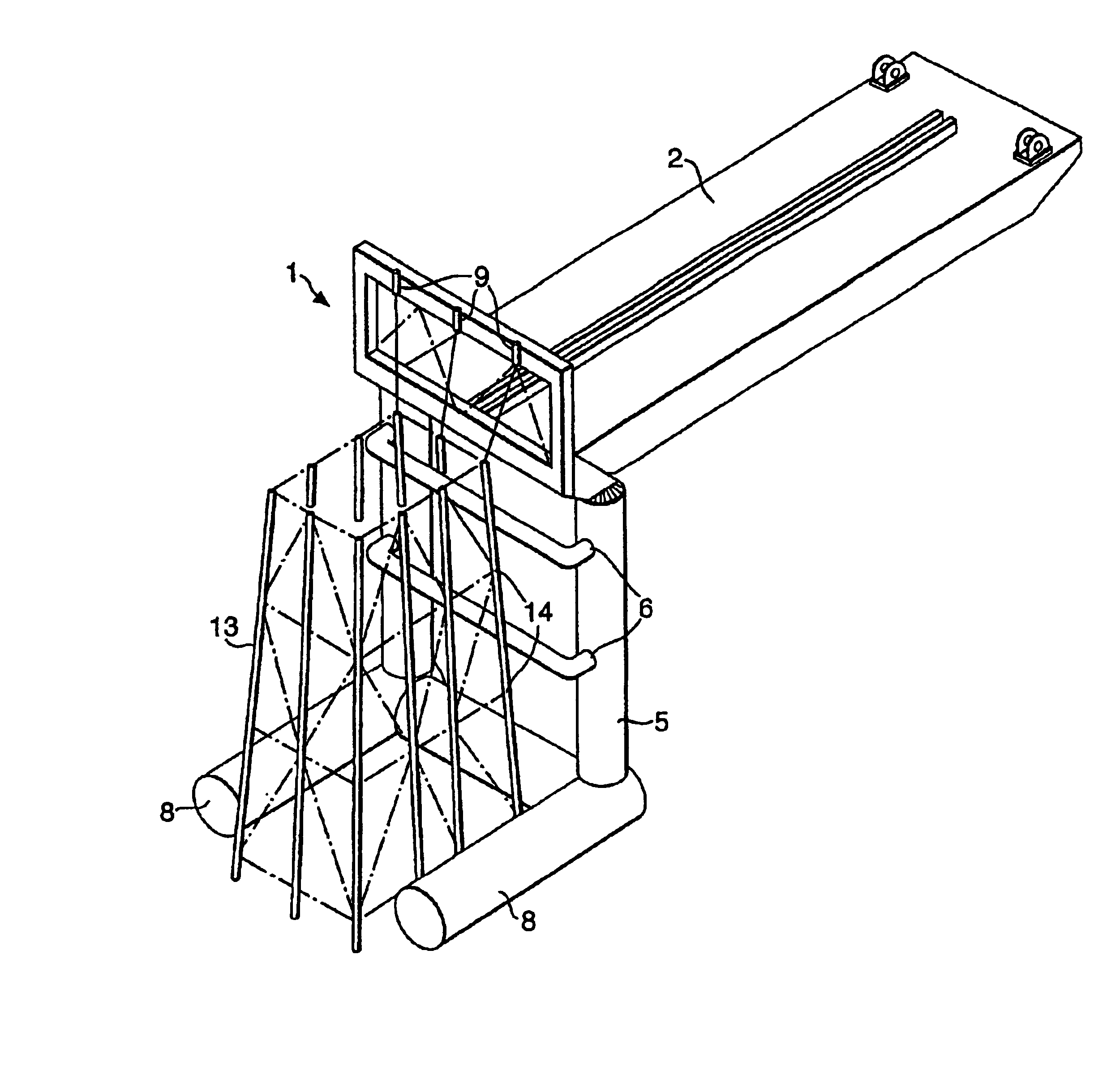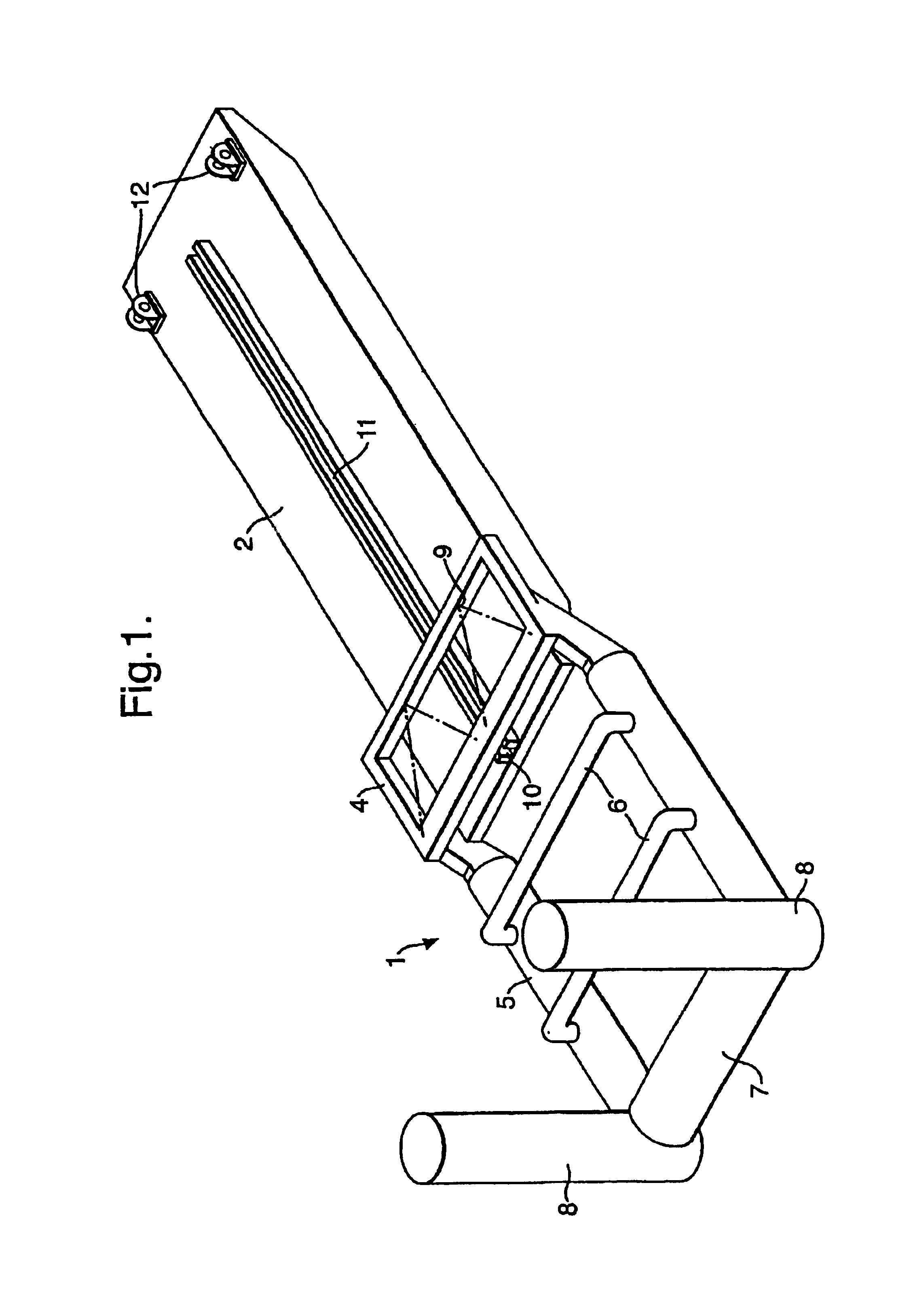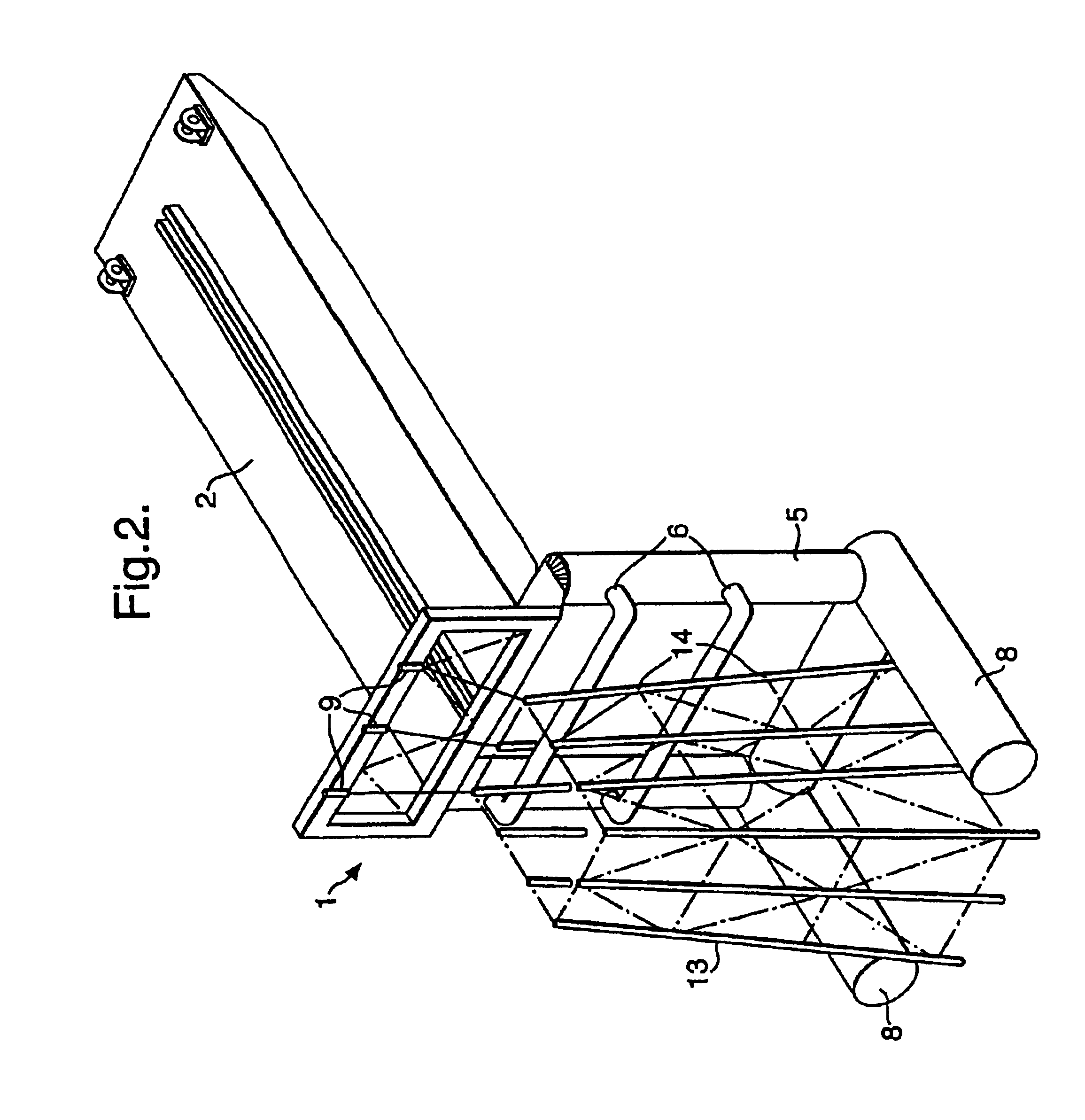Method and apparatus for the lifting of offshore installation jackets
a technology for installation jackets and equipment, which is applied in the direction of marine vessel transportation, caissons, artificial islands, etc., can solve the problems of difficult turning, insufficient strength to transfer its own weight, and relatively weak design or constructions in transversal directions, etc., to achieve low fabrication costs, simple unloading, and cost-effective
- Summary
- Abstract
- Description
- Claims
- Application Information
AI Technical Summary
Benefits of technology
Problems solved by technology
Method used
Image
Examples
Embodiment Construction
[0040]FIG. 1 to FIG. 4 shows an embodiment of an offshore lifting construction or arm (1) according to the invention. The figures show various phases of a lifting process. The lifting construction is shown attached to a barge (2). The lifting construction is designed with two substantially parallel longitudinal elements or tubes (5), between, on the upper part of the lifting construction provided, a frame (4) with a holding arrangement (9) for the jacket that is to be lifted, two intermediate supporting elements or beams (6), a lower tubular transversal unit (7) and a joint (10) for attachment to the barge (2). On the lower part of the two substantially parallel longitudinal elements (5), two tubular elements or branches (8) are provided substantially perpendicular to the longitudinal direction of the substantially parallel longitudinal elements (5). The barge is equipped with a skidding rail (11) and winches (12). The joint (10) (shown on FIG. 1 and FIG. 11) is skiddingly connected...
PUM
 Login to View More
Login to View More Abstract
Description
Claims
Application Information
 Login to View More
Login to View More - R&D
- Intellectual Property
- Life Sciences
- Materials
- Tech Scout
- Unparalleled Data Quality
- Higher Quality Content
- 60% Fewer Hallucinations
Browse by: Latest US Patents, China's latest patents, Technical Efficacy Thesaurus, Application Domain, Technology Topic, Popular Technical Reports.
© 2025 PatSnap. All rights reserved.Legal|Privacy policy|Modern Slavery Act Transparency Statement|Sitemap|About US| Contact US: help@patsnap.com



